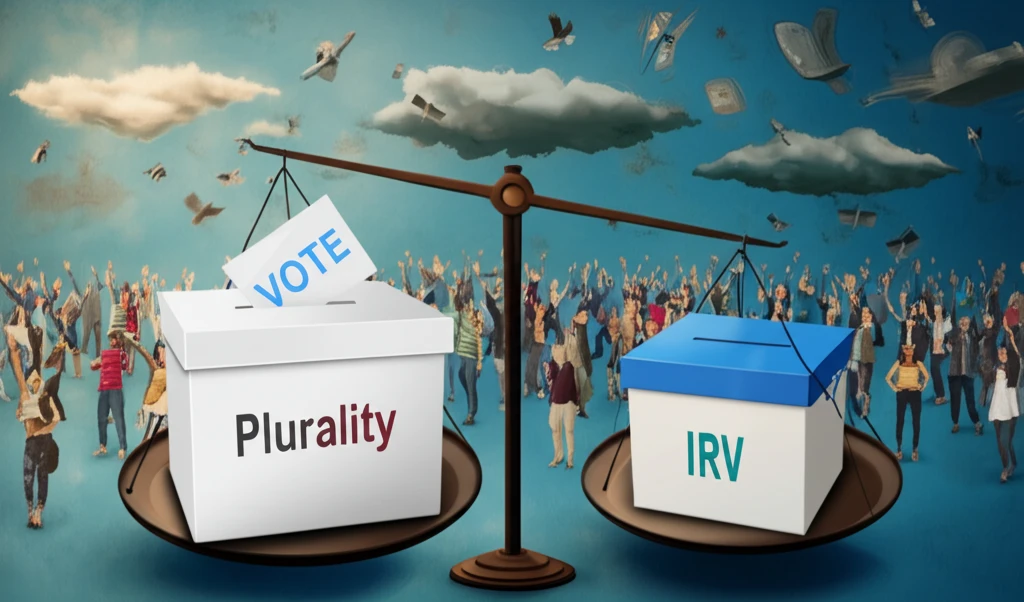
Can Ranked-Choice Voting Heal Political Divides? The Surprising Science Behind IRV
"Discover how instant runoff voting (IRV) moderates political outcomes, fostering compromise and reducing polarization, according to new research."
In an era marked by increasing political polarization, finding effective ways to bridge divides has become more critical than ever. Instant runoff voting (IRV), also known as ranked-choice voting, has emerged as a promising alternative to traditional plurality voting systems. Advocates claim it encourages moderation, reduces negative campaigning, and ultimately leads to more representative outcomes. But does IRV really live up to the hype?
While IRV has gained traction in various municipalities and even a few states, theoretical backing for its purported benefits has been limited. Existing evidence often relies on case studies and simulations, leaving a gap in our understanding of how IRV functions at a fundamental level. Is there something inherent in the structure of IRV that promotes moderation, or are its observed effects simply the result of how candidates and voters behave under the system?
A new study tackles this question head-on, providing compelling evidence that IRV does indeed have a moderating effect relative to plurality voting. By developing a precise mathematical framework, the researchers demonstrate how IRV can prevent extreme candidates from winning, even when voters and candidates are drawn from polarized distributions. The findings offer valuable insights into the potential of IRV to foster compromise and create a more balanced political landscape.
How Does Instant Runoff Voting (IRV) Work?

Before diving into the study's findings, let's quickly recap how IRV works. In a traditional plurality voting system, voters simply choose their favorite candidate, and the candidate with the most votes wins. IRV, on the other hand, asks voters to rank candidates in order of preference. If no candidate receives a majority of first-place votes, the candidate with the fewest first-place votes is eliminated, and their votes are redistributed to the next-ranked candidate on each ballot. This process continues until one candidate obtains a majority and is declared the winner.
- Encourages Compromise: Candidates aim to be acceptable to a wide range of voters.
- Reduces Negative Campaigning: Incentivizes candidates to maintain broader appeal.
- Elects More Moderate Winners: Lessens the chance of polarizing figures winning.
The Future of Voting: Is IRV the Answer?
The research provides a compelling case for the moderating effects of IRV, adding a crucial theoretical layer to the ongoing debate about electoral reform. While IRV is not a panacea for all that ails our political system, it offers a promising mechanism for fostering compromise and reducing the influence of extreme voices. As more municipalities and states consider adopting IRV, this study provides valuable insights for policymakers and voters alike.
